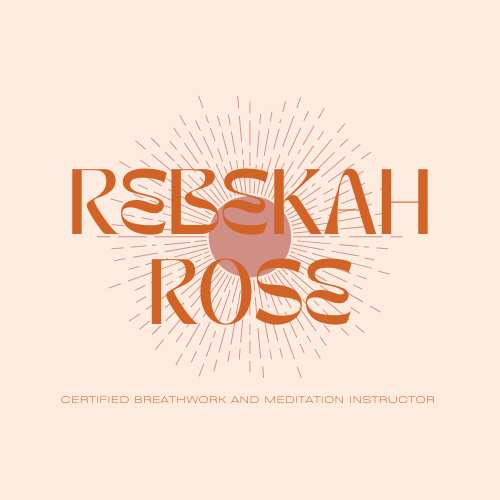Finding Balance: How Meditation and Breath Work Ease Dizziness and Vertigo
Dizziness and vertigo can disrupt life's equilibrium, making even simple tasks feel daunting. Nearly 40 percent of U.S. adults will experience vertigo in their lifetime and about 20 percent deal with it on a regular basis. (1) Whether triggered by inner ear problems, stress, or other underlying conditions, the sensation of spinning or imbalance can be overwhelming. Complementary practices like meditation and breath work can provide powerful support to traditional approaches in managing these symptoms and promoting overall well-being.
Understanding Dizziness and Vertigo
Dizziness refers to a range of sensations, including lightheadedness, faintness, and the feeling of unsteadiness. Vertigo, on the other hand, is characterized by the illusion of movement or spinning, often accompanied by nausea and imbalance. Both conditions can arise from various causes, such as inner ear disturbances, diet, vestibular disorders, migraines, anxiety, or low blood pressure.
The Mind-Body Connection
Meditation and breath work harness the mind-body connection to alleviate symptoms of dizziness and vertigo. By training the brain to use information from the body for orientation instead of using vision we are able to navigate the sensations and work towards restoring balance. Breathwork is used to regulate physiological responses such as slowing the heart rate and lowering blood pressure. (2)
Meditation: Cultivating Inner Stability
How do we utilize meditation to reduce the intensity and frequency of episodes? Meditation is consistently practicing a state of focused attention and relaxation. By training the mind to observe thoughts and sensations without judgment, we develop resilience against the distressing effects of dizziness and vertigo. The panic that often accompanies the onset of vertigo can be controlled and reduced with meditation and breathwork, creating a foundation for successful navigation of the episode.
1. Focused Attention: Practicing meditation involves directing attention to the present moment, anchoring awareness in the breath or a chosen focal point. By shifting focus away from symptoms, we can reduce the intensity of vertigo-induced sensations.
2. Stress Reduction: Chronic stress exacerbates symptoms of dizziness and vertigo by triggering physiological responses that disrupt equilibrium. Deep breathing and progressive muscle relaxation activate the body's relaxation response, counteracting the effects of stress hormones.
3. Enhanced Balance: Regular meditation can improve balance and spatial orientation by promoting neuroplasticity—the brain's ability to reorganize and adapt. (3) By working on body awareness, we become more attuned to subtle changes in posture and movement, reducing the risk of falls associated with vertigo.
Breathwork: Regulating the Body's Rhythm
Breathwork encompasses various techniques aimed at modulating breathing patterns to influence physical and emotional states. By utilizing various techniques we can regulate autonomic functions and alleviate symptoms of dizziness and vertigo.
1. Diaphragmatic Breathing: Shallow breathing patterns contribute to feelings of tension and exacerbate symptoms of dizziness. Diaphragmatic breathing, also known as belly breathing, involves inhaling deeply through the nose, allowing the abdomen to expand, and exhaling slowly through pursed lips. This technique promotes relaxation, reduces muscle tension, and enhances oxygenation, fostering a sense of calm amidst vertigo episodes.
2. Equal Breathing: Balancing the inhale and exhale durations through equal breathing can promote equilibrium within the body. By synchronizing breath cycles, individuals establish a rhythmic pattern that calms the nervous system and fosters stability in the face of vertigo-induced sensations.
3. Pranayama: Derived from yoga tradition, pranayama techniques offer a diverse repertoire of breath work practices tailored to specific needs. Techniques such as Nadi Shodhana (alternate nostril breathing) and Bhramari (humming bee breath) can enhance vestibular function, alleviate stress, and promote inner balance.
Integrating Meditation and Breath Work into Daily Life
Incorporating meditation and breath work into daily routines empowers individuals to proactively manage symptoms of dizziness and vertigo. By cultivating mindfulness and regulating breath, individuals develop a toolbox of self-care strategies to navigate challenges with greater resilience and grace.
1. Consistency is Key: Establishing a regular meditation practice and incorporating breath work into daily activities fosters familiarity and proficiency over time. Consistency reinforces neural pathways associated with relaxation and self-regulation, making it easier to access these states during vertigo episodes.
2. Adaptation and Exploration: Recognizing that different techniques resonate with individuals uniquely, experimentation and adaptation are encouraged. Whether seated meditation, guided visualization, or dynamic breath exercises, finding what feels comfortable and effective is paramount in sustaining a sustainable practice.
3. Seeking Professional Guidance: While meditation and breath work offer valuable tools in managing dizziness and vertigo, consulting healthcare professionals remains essential, especially when symptoms persist or worsen. Integrative approaches that combine medical interventions with complementary practices can optimize outcomes and enhance overall well-being.
By engaging in these practices, we stimulate the parasympathetic nervous system, which plays a crucial role in regulating bodily functions and promoting relaxation. This, in turn, enhances our ability to manage symptoms and restore equilibrium.
Cultivating mindfulness can lead to structural changes in the brain associated with improved emotional regulation and resilience. Through consistent practice, individuals can harness the neuroplasticity of the brain to develop greater self-awareness and adaptive coping strategies, ultimately leading to a reduction in the severity and frequency of dizziness and vertigo episodes.
By embracing these evidence-based approaches with dedication and a scientific mindset, we embark on a journey towards holistic well-being, grounded in the principles of neuroscience and mind-body medicine.
Neuhauser HK. The epidemiology of dizziness and vertigo. Handb Clin Neurol. 2016;137:67-82. doi: 10.1016/B978-0-444-63437-5.00005-4. PMID: 27638063.
Garg P, Mendiratta A, Banga A, Bucharles A, Victoria P, Kamaraj B, Qasba RK, Bansal V, Thimmapuram J, Pargament R, Kashyap R. Effect of breathing exercises on blood pressure and heart rate: A systematic review and meta-analysis. Int J Cardiol Cardiovasc Risk Prev. 2023 Dec 27;20:200232. doi: 10.1016/j.ijcrp.2023.200232. PMID: 38179185; PMCID: PMC10765252.
Tang R, Friston KJ, Tang YY. Brief Mindfulness Meditation Induces Gray Matter Changes in a Brain Hub. Neural Plast. 2020 Nov 16;2020:8830005. doi: 10.1155/2020/8830005. PMID: 33299395; PMCID: PMC7704181.
